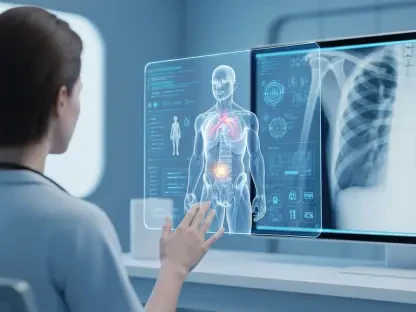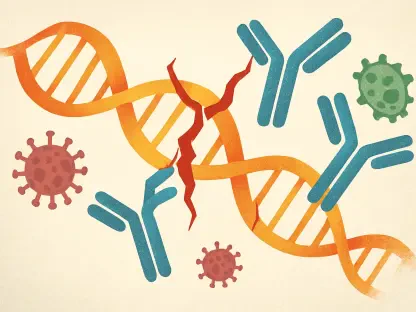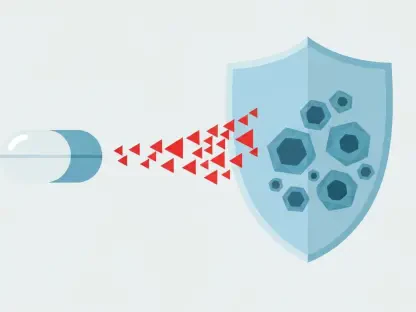Recent findings have shed light on the pivotal role of fibroblastic reticular cells (FRCs) in enhancing the immune response within lung cancer tumors, particularly non-small cell lung cancer (NSCLC). These specialized cells create environments that bolster T-cell activity, potentiating anti-tumor immunity. The insights come from a study published in the journal Cell, which used advanced methodologies to explore the intricate workings of FRCs in lung tumors.
The Role of FRCs in Immune Response
FRCs in Lymphoid Organs
FRCs are well-known for their role in lymphoid organs, where they provide structural support and secrete factors that guide immune cells. These cells are pivotal for T-cell migration, survival, and differentiation. In the context of cancer, the presence and functions of FRCs within tumors have been less clear, prompting the necessity for detailed research to uncover their contributions to tumor immunity.
The structural support provided by FRCs in lymphoid organs involves creating a framework within which immune cells can reside and function. They secrete extracellular matrix proteins and cytokines that form a supportive scaffold for immune cells. This structural framework is essential for the efficient movement and interaction of T-cells and other immune cells. The ability of FRCs to guide immune cells through chemokine secretion facilitates T-cell navigation to sites of infection or inflammation, ensuring an effective immune response. The critical role these cells play in immune cell guidance and structure in lymphoid organs made it necessary to investigate their role within tumor environments.
FRCs in Lung Tumors
The study employed an array of sophisticated techniques, including single-cell RNA sequencing, high-resolution microscopy, and cell fate mapping, to investigate FRCs in NSCLC and in experimental mouse models. Researchers analyzed human lung tumor samples to determine the distribution and characteristics of FRCs. Through immunohistochemical staining, they observed that FRCs expressing C-C motif chemokine ligand 19 (CCL19) were located in tumor-associated niches such as tertiary lymphoid structures and T-cell tracks.
In the tumor microenvironment, FRCs appear to play a crucial role in organizing T-cell migration and clustering, mirroring their functions in lymphoid organs. The ability of FRCs to create niches within tumors where immune cells can gather and interact is vital for effective anti-tumor responses. The presence of FRCs in these niches suggests that they might orchestrate immune responses within tumors similarly to lymphoid tissues. The expression of CCL19 by FRCs in these areas highlights their role in attracting and guiding T-cells, fostering robust anti-tumor immunity. This research has provided valuable insights into how FRCs contribute to the dynamic immune microenvironment of lung tumors, prompting further exploration into their potential as therapeutic targets.
Differentiation Pathways of FRCs
Insights from Mouse Models
Further experiments in mice provided additional insights into the differentiation pathways of FRCs. By tracing lineage, researchers identified two distinct subsets of FRCs: perivascular reticular cells and T zone reticular cells, both originating from perivascular progenitor cells. Advanced imaging techniques such as confocal microscopy allowed for the detailed spatial analysis of these FRC subsets, revealing their crucial role in creating pathways for T-cell migration and clustering within tumors.
The differentiation of FRC subsets from perivascular progenitor cells highlights the specialized roles that each subset plays in the tumor microenvironment. Perivascular reticular cells and T zone reticular cells each contribute uniquely to the formation of immune-boosting niches. The role of confocal microscopy in visualizing these subsets has been instrumental in understanding how these cells populate and organize within the tumor. By elucidating the differentiation pathways of these FRCs, researchers have uncovered the intricate processes that underpin their capacity to support immune cell function within tumors. This knowledge is essential for developing strategies aimed at harnessing FRCs to enhance immune responses against tumors.
Formation of Immune Niches
The formation of these niches is crucial for sustaining T-cell functions that are essential for mounting an effective anti-tumor response. The study demonstrated that distinct subsets of FRCs differentiate from progenitor cells in perivascular spaces and are crucial for maintaining immune niches that support T-cell recruitment, survival, and activation.
In these immune niches, the interactions between FRCs and T-cells are vital for the persistence of effective anti-tumor responses. The supportive environment created by FRCs includes structural components and signaling molecules that foster T-cell clustering, migration, and activation. By forming pathways that facilitate these processes, FRCs ensure that T-cells can effectively target and destroy tumor cells. The identification of FRC subsets and their roles in immune niche formation underscores the importance of a well-organized microenvironment for immune cell function. The study’s findings highlight the potential of targeting FRCs or their pathways to enhance the immune system’s ability to fight cancer.
Impact of FRCs on Tumor Immunity
Coronavirus Vector-Based Immunotherapy Model
To further substantiate their findings, the researchers utilized a coronavirus vector-based immunotherapy model. This model showed that the induction of FRC-supported tertiary lymphoid structures significantly enhanced immune cell infiltration and anti-tumor activity. Additionally, the ablation or inactivation of FRCs in mice led to a marked reduction in T-cell presence and diminished tumor control, underscoring the essential role of FRCs in immune defense within tumors.
The immunotherapy model provided a controlled setting to observe the effects of FRC presence on tumor immunity. By using coronavirus vectors to induce specific structures supported by FRCs, researchers were able to enhance the recruitment and infiltration of immune cells into the tumor. The subsequent reduction in T-cell presence upon FRC ablation highlighted their indispensable role in maintaining these immune-supportive structures. These findings affirmed that FRCs play a critical role in facilitating robust immune responses within tumors, thus positioning them as key players in cancer immunotherapy. Such models are instrumental in understanding the practical implications of FRC-targeting strategies for enhancing anti-tumor immunity.
Molecular Pathways Mediated by FRCs
The study engaged in comprehensive bioinformatics analyses to identify the molecular pathways through which FRCs mediate immune regulation. Key pathways included those involving chemokines such as C-X-C motif chemokine ligand (CXCL)12 and CXCL16, along with adhesion molecules like intercellular adhesion molecule 1 (ICAM-1) and vascular cell adhesion molecule 1 (VCAM-1). These molecules are instrumental in facilitating T-cell migration, clustering, and activation, thereby bolstering anti-tumor immunity.
The identification of these pathways reveals the complex molecular mechanisms by which FRCs support immune cell function within the tumor microenvironment. Chemokines like CXCL12 and CXCL16 play vital roles in directing T-cell migration to the tumor site, ensuring that immune cells are effectively guided to areas where they are needed most. Adhesion molecules such as ICAM-1 and VCAM-1 facilitate stable interactions between immune cells and FRCs, promoting the clustering and activation of T-cells. Understanding these molecular interactions opens up new avenues for therapeutic interventions that target these pathways to enhance immune responses against tumors. The bioinformatics approach provided a comprehensive view of the signaling networks involved, highlighting the potential for manipulating these pathways in cancer treatment.
Potential Therapeutic Implications
Targeting FRCs for Cancer Immunotherapy
The research findings underscore the foundational role of FRCs in creating immune-boosting niches within lung cancer tumors. By forming structures similar to those in lymphoid organs, such as tertiary lymphoid structures and T-cell tracks, FRCs enable enhanced T-cell interactions and activity. In human NSCLC, FRCs expressing CCL19 are key to the formation of these supportive structures, which in turn facilitate T-cell clustering and improved immune responses within the tumor microenvironment.
The potential to target FRCs for immunotherapy lies in their ability to create and sustain environments that promote effective immune cell function. Therapeutic strategies that enhance the presence or function of FRCs could significantly boost the immune system’s capacity to fight cancer. The study’s findings suggest that interventions aimed at increasing the formation of FRC-supported structures could lead to improved patient outcomes by fostering a more robust and sustained anti-tumor response. The role of CCL19-expressing FRCs in organizing these niches underscores the importance of targeting specific FRC populations to maximize therapeutic benefits.
Future Directions in Cancer Treatment
Recent research has uncovered the crucial role of fibroblastic reticular cells (FRCs) in boosting the immune response within lung cancer tumors, especially in cases of non-small cell lung cancer (NSCLC). FRCs are specialized cells that create environments enhancing T-cell activity, thereby strengthening the body’s anti-tumor defenses. These findings were detailed in a study published in the journal Cell, which employed advanced methodologies to investigate the complex functions of FRCs in lung tumors.
The study’s findings underscore the importance of the tumor microenvironment and its components in cancer progression and treatment. FRCs, by fostering T-cell activity, could become a focal point for new therapeutic strategies aimed at enhancing anti-tumor immunity. This research highlights the potential of targeting FRCs to improve the efficacy of existing treatments and opens up new avenues for immunotherapy in lung cancer. Overall, these insights contribute to a deeper understanding of the interplay between cancer cells and the immune system, potentially leading to more effective treatments for NSCLC.









